Laser - Light Microscopy
1/20
There's no tags or description
Looks like no tags are added yet.
Name | Mastery | Learn | Test | Matching | Spaced |
|---|
No study sessions yet.
21 Terms
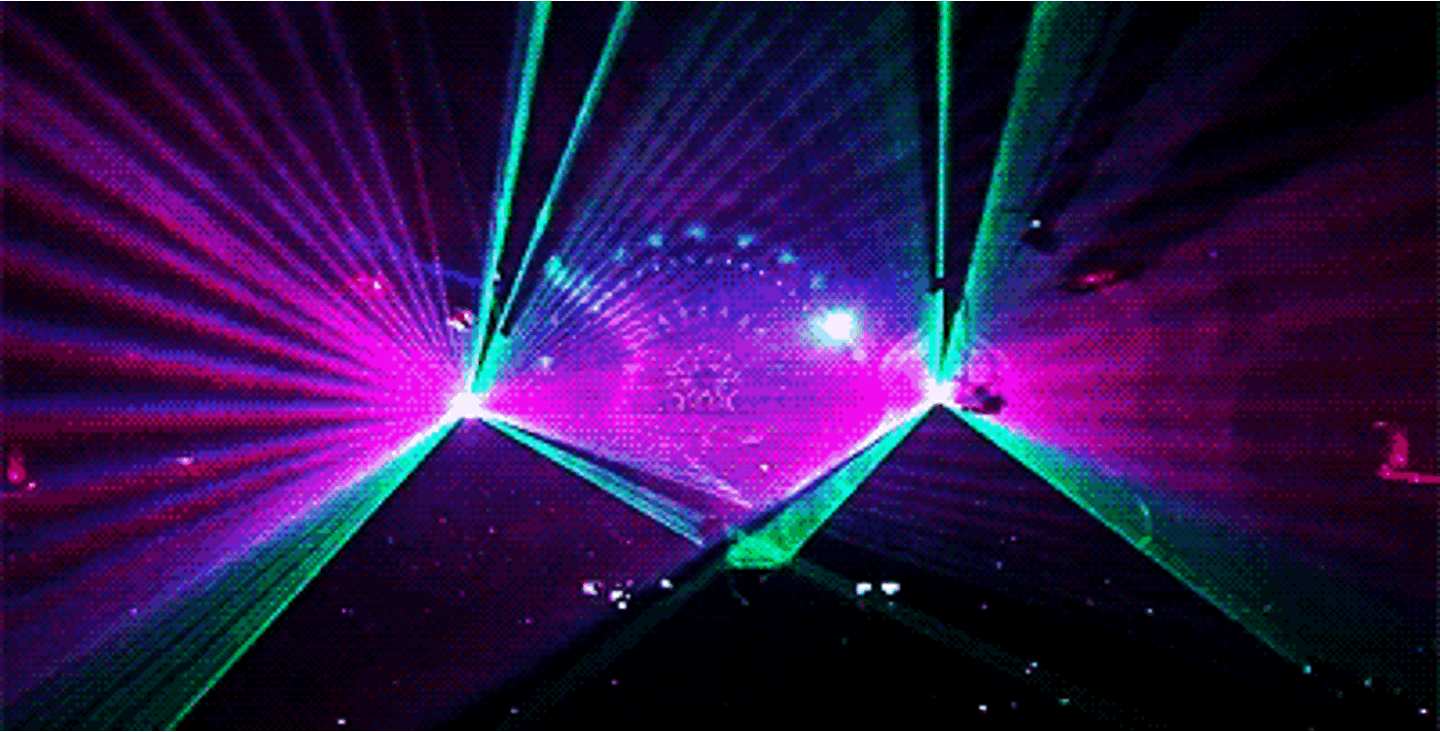
Lasers:
Light Amplification by the Stimulated Emission of Radiation
1917 - Theory
Albert Einstein Introduced the concept of stimulated emission.
1954 - Maser
Charles Townes demonstrated at Columbia University the first maser
1960 - First Laser
Theodore Maiman developed the first working laser at Hughes Research Lab.
Stimulated Emission
The operation of a laser depends upon the net production of “stimulated” emission.
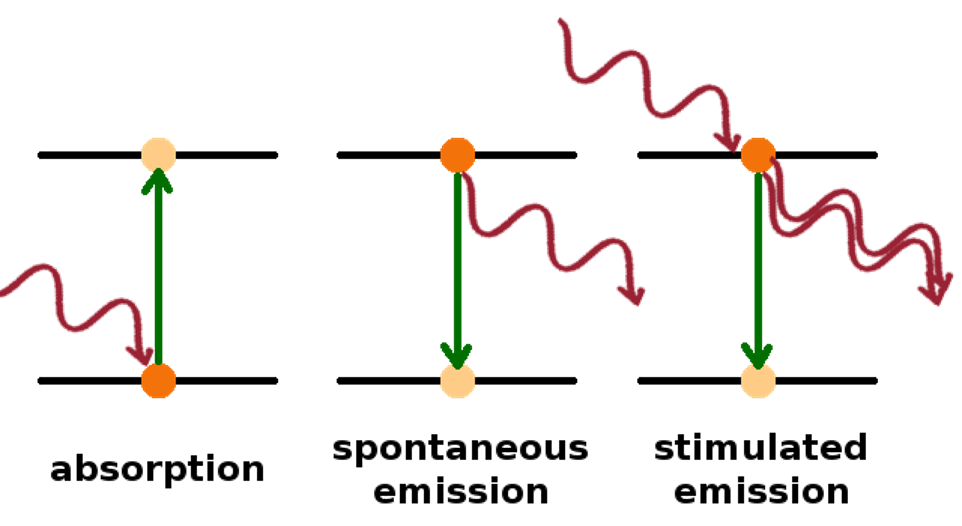
Population Inversion
Population of higher energy state must be greater than lower energy energy state - Population inversion
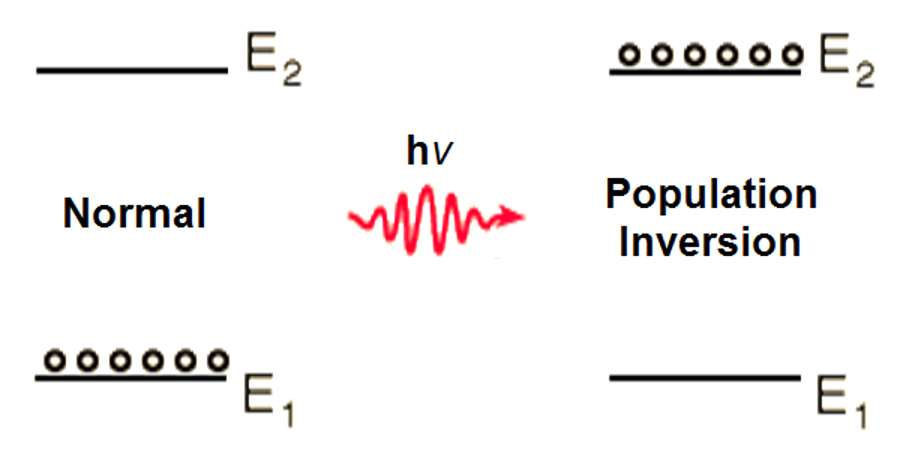
To understand the principles of laser action, consider a typical laser setup - ND:YAG (Nd:Y3Al5O12):
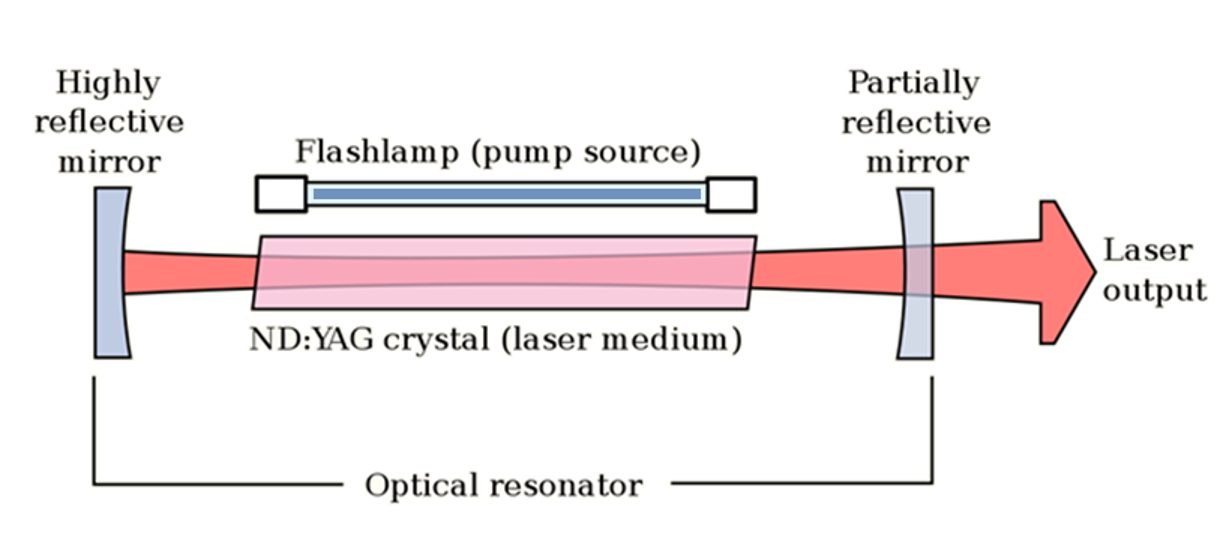


Shape of beam is a function of the cavity and mirrors.

Types of laser
Population inversion can be achieved via several routes.
many of these processes rely on inter- and intra molecular energy transfer.
Two-level systems cannot produce population inversion.
only spontaneous emission possible:
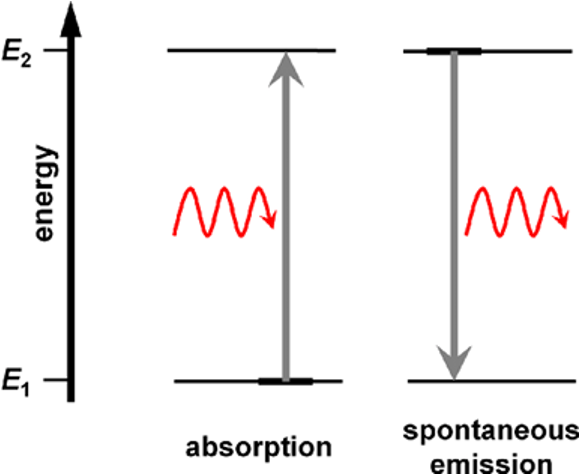
3-level
Ruby laser (694 nm)
B, is populated with traditionless transition less transition from C.
Population inversion will occur if C to B is faster than B to X.

4-level
ND:YAG - 1064 nm
Initially X is populated and A is un-populated.
As soon as state B is populated, there is a population inversion wrt level A.
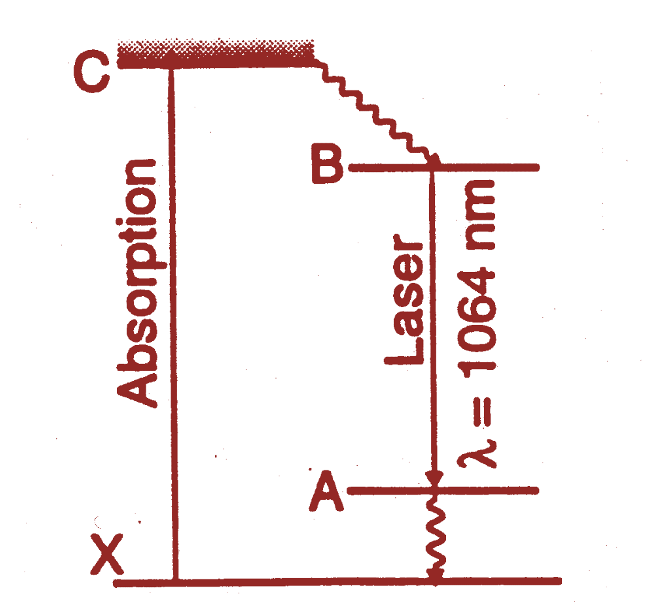
Organic dye
these are pseudo four-level systems:
- only two energy levels used.
- use of the vibrational sub-levels.
dyes are normally in solution.
collisional quenching maintains population inversion.
tuneable using filters.
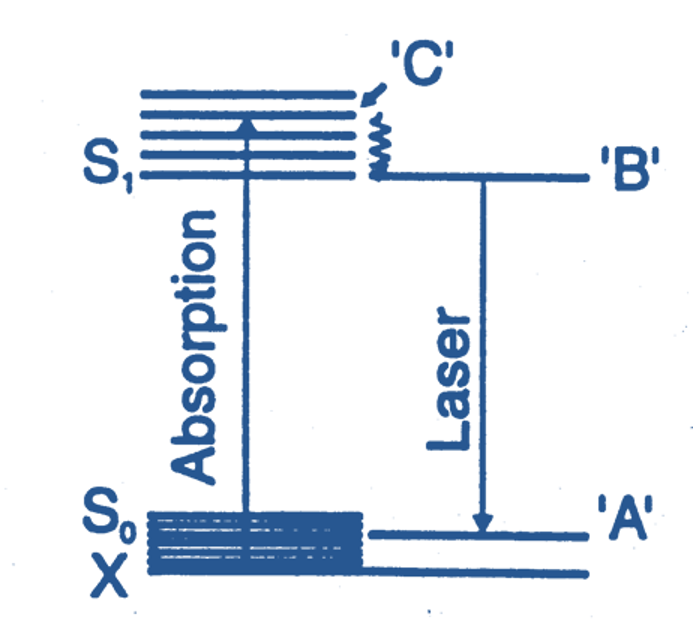
Gas
electrical excitation to achieve population inversion.

Gas
He- Ne based on inter-molecular energy transfer.
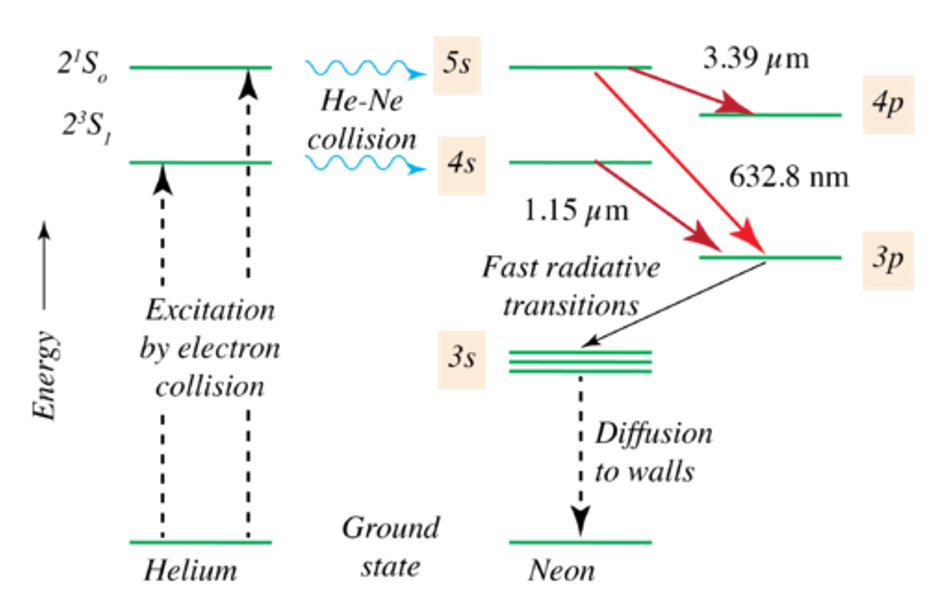
HeNe Energy Levels
The laser process in a HeNe laser starts with the collision of electrons from the electrical discharge with the helium atoms in the gas. This excites helium from the ground state to a long-lived, metastable excited state. These excited helium atoms then collide with the ground-state neon atoms, producing excited neon atoms. The number of neon atoms entering the excited states builds up until population inversion is achieved. Spontaneous and stimulated emission between the states results in emission of 632.82 nm wavelength light, along with other emission wavelengths (see figure at right). From these states, the electrons quickly decay to the ground state. The HeNe laser's power output is limited because the neon upper level saturates with higher current, while the lower level varies linearly with current.
The laser cavity can be designed with the correct mirrors and length to promote other wavelengths of laser emission. There are infrared transitions at 3.39 µm and 1.15 µm wavelengths and a variety of visible transitions, including a green (543.365 nm), yellow (593.932 nm), yellow-orange (604.613 nm), and orange (611.802 nm) transition (see figure below). The typical red 632.8 nm wavelength output of a HeNe laser has a much lower gain compared to other wavelengths, such as the 1.15 µm and 3.39 µm lines.

Gas
Ar/Ar ion laser.
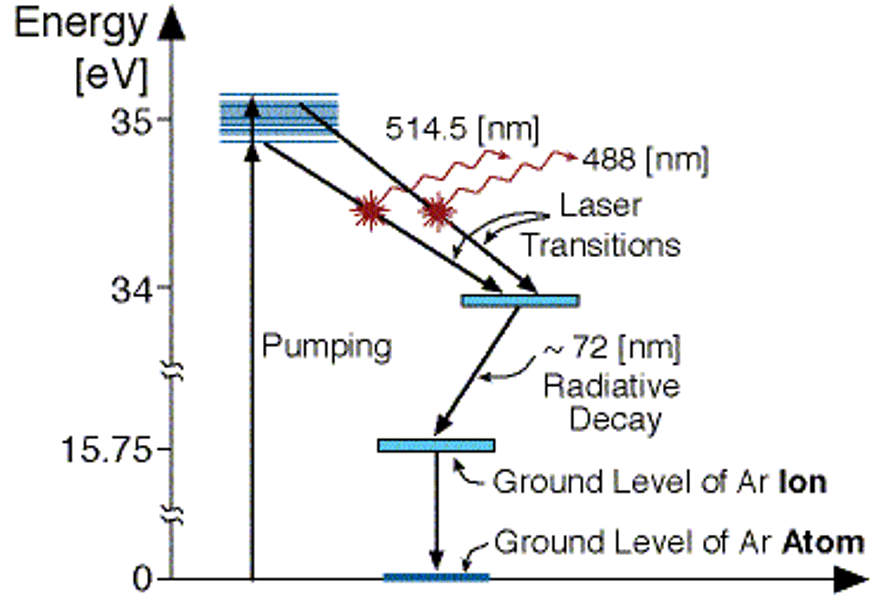
semiconductor diode laser
in general these devices operate in the infrared region.
diode lasers are fabricated utilizing a specialised type of semiconductor junction, and therefore share many of the advantages and characteristics of other semiconductors and solid-state devices.
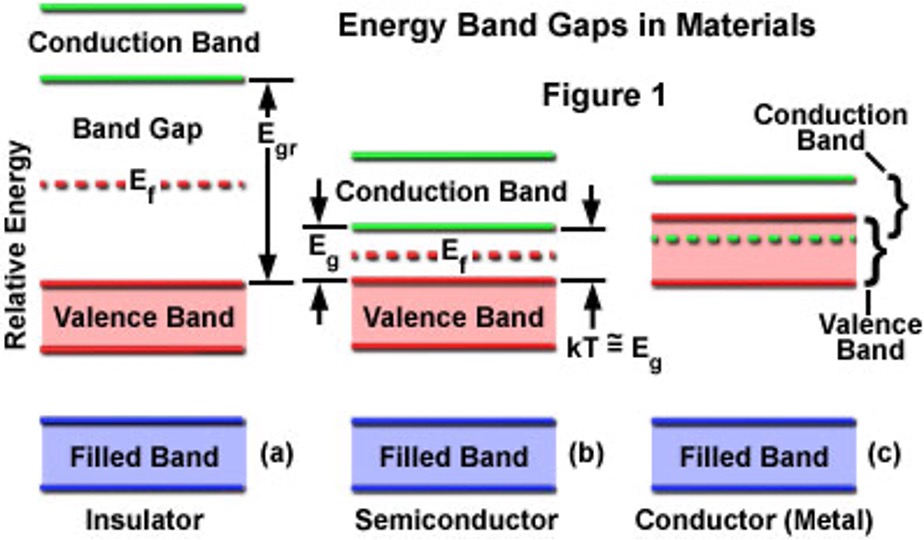
types of lasers:
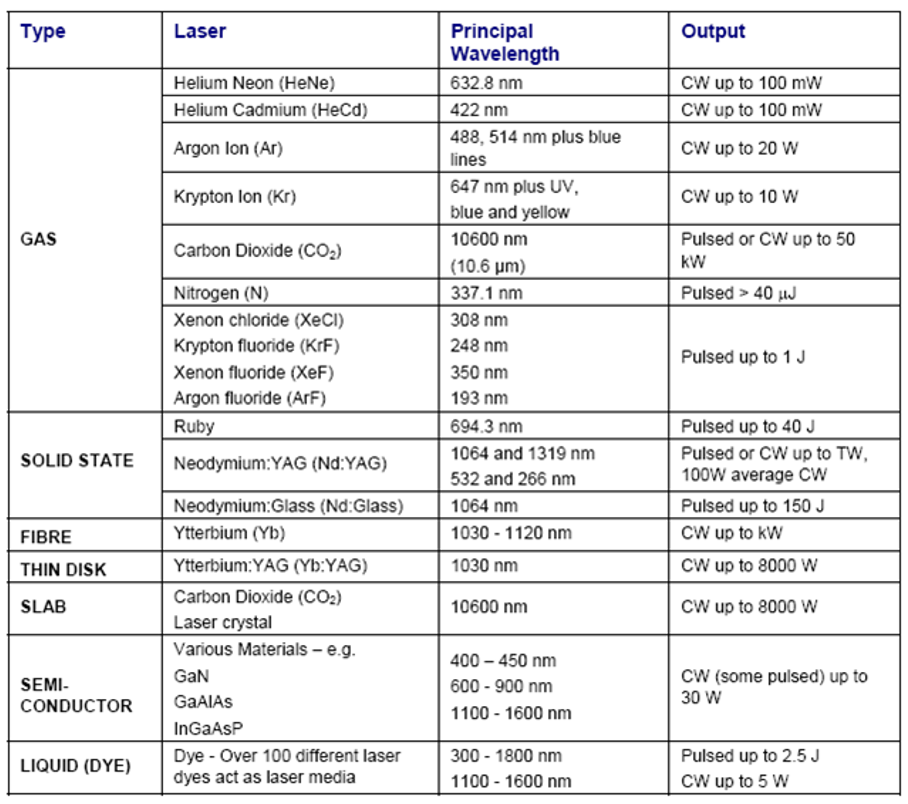
uses of lasers:
Power | Use |
1–5 mW | Laser pointers |
5 mW | CD-ROM drive |
5–10 mW | DVD player or DVD-ROM drive |
100 mW | High-speed CD-RW burner |
250 mW | Consumer 16× DVD-R burner |
400 mW | Burning through a jewel case including disc within 4 seconds |
DVD 24× dual-layer recording. | |
1 W | Green laser in current Holographic Versatile Disc prototype development |
1–20 W | Output of the majority of commercially available solid-state lasers used for micro machining |
30–100 W | Typical sealed CO2 surgical lasers |
100–3000 W | Typical sealed CO2 lasers used in industrial laser cutting |
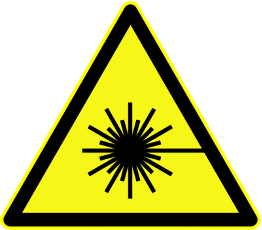
Safety
